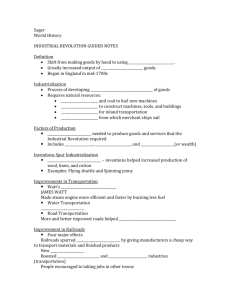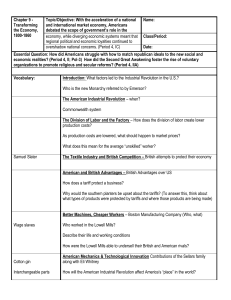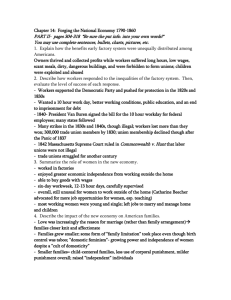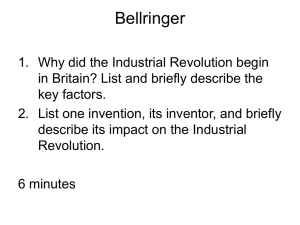2_01assignmentcomplete
advertisement
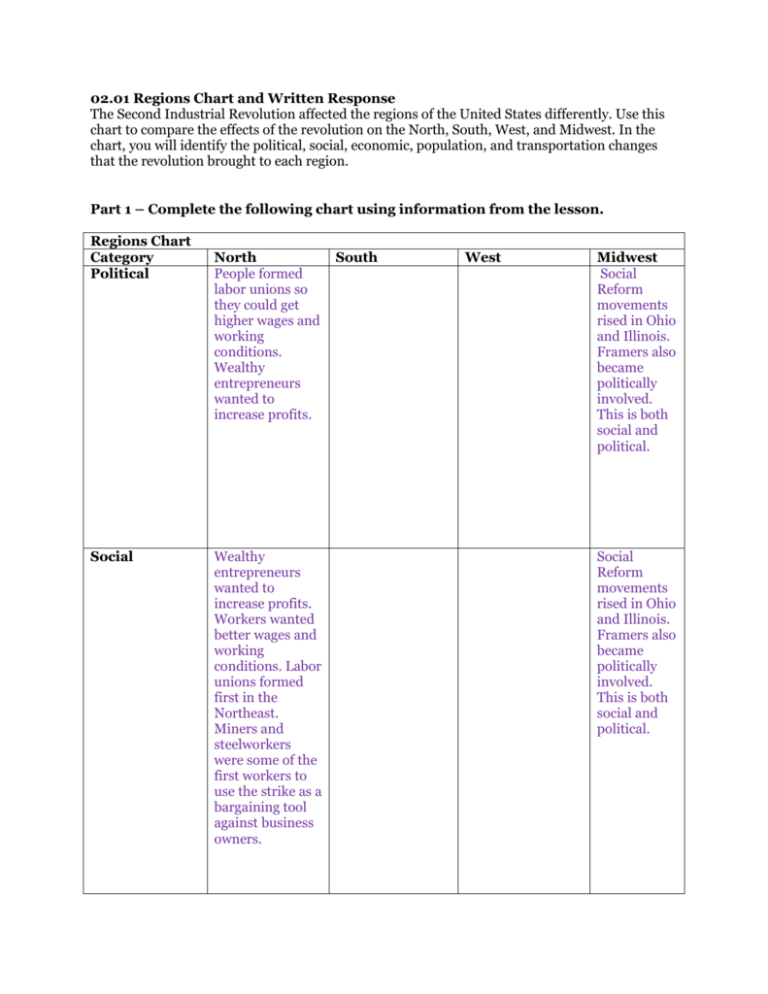
02.01 Regions Chart and Written Response The Second Industrial Revolution affected the regions of the United States differently. Use this chart to compare the effects of the revolution on the North, South, West, and Midwest. In the chart, you will identify the political, social, economic, population, and transportation changes that the revolution brought to each region. Part 1 – Complete the following chart using information from the lesson. Regions Chart Category Political Social North People formed labor unions so they could get higher wages and working conditions. Wealthy entrepreneurs wanted to increase profits. Wealthy entrepreneurs wanted to increase profits. Workers wanted better wages and working conditions. Labor unions formed first in the Northeast. Miners and steelworkers were some of the first workers to use the strike as a bargaining tool against business owners. South West Midwest Social Reform movements rised in Ohio and Illinois. Framers also became politically involved. This is both social and political. Social Reform movements rised in Ohio and Illinois. Framers also became politically involved. This is both social and political. Economic or Type of Economy Remained the leading industrial region. Produced more than 8%% of the United States’ industrial products. The South began developing a timber industry. Coal and iron deposits in the southern Appalachian Mountains gave rise to steel production in Birmingham, Alabama. The economy continued to rely on natural resources. Population Change The population grew because workers were needed and this is where immigrants would come to work. Laws that allowed segregation and discrimination made it hard for southern African Americans to enjoy the improved transportation of the Second Industrial Revolution. Many African Americans left the South to work in new factories in the North and Midwest. There they had a better chance of earning good wages and improving their economic and social standing. Immigrants from China arrived in the West looking for jobs on the expanding railroads. They were very willing to get jobs. Transportation Railroads were built. These railroads caused a number of supporting industries. The completion of the Transcontinental Railroad in 1869 linked the coasts of United States. Railways transported natural resources like timber and There was a gap between rich and poor. Chicago benefitted from the developing railways because it became the gateway of the East and West. gold from the West to the East. Part 2 – Respond to the following prompt in a well-developed paragraph of your own words. Be sure to include social, political and economic factors in your response and fully address all parts of the prompt. Explain how the Second Industrial Revolution affected the North, South, West, and Midwest. Which region would you have preferred to live in during this period? Why The Second Industrial Revolution affected the United states many ways. There was better transportation and technology. But there was also more labor and the labor became unsafe and unsanitary. There was also Labor Unions and other groups that would help with social and political issues. I think if I would want to live in a region in this time period, I would want to live in the West. The West had many very good natural resources. The West probably also had better sanitation when it came to living because the North was very packed and had unsanitary living.
